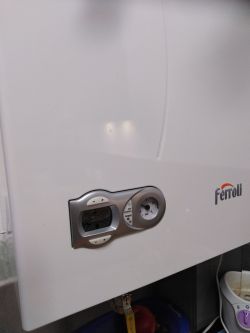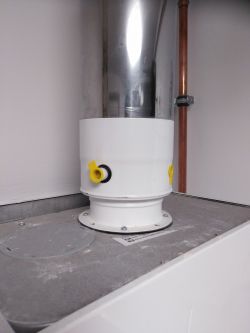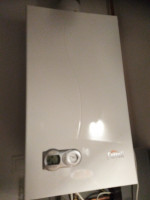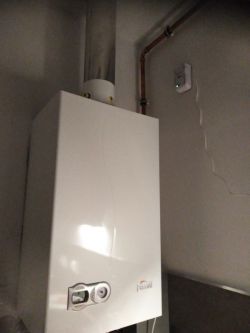1. What sensor such security and alarms. Buy something decent, not market cheap. Your friend suggested Gazex.
2. I can't see the boiler from the pictures, but if it's an open chamber and an uninsulated chimney, the sensor is quite close and may heat up, and the measurement may be disturbed. Most instructions state about 1m or even 1.5m from the chimney, ventilation inlets/outlets, windows, etc.
3. The sensor can react to other gases appearing in the air (e.g. propane-butane from deodorants or hairsprays, alcohol from perfumes, etc.) so it is worth checking whether, for example, we did not do something and then the detector worked.
4. Semiconductor detectors can react to water vapor (mainly rapid changes), so a lover of an intense, hot bath can trigger an alarm.
BUCKS wrote: Because if carbon monoxide, I would buy a second sensor, eg Kidde 10LLCO, which has a display and if carbon monoxide is detected, it will show the value on the display.
What does it change? It does not matter how the sensor signals - whether with a diode or a display. If the sensor indicates incorrectly or there is a false alarm, then the LED or display will also turn on, which will show some value, but false. The diode or display is just a form of informing the user triggered by the same system. But psychologically, people catch on that if I have gas on the display, there is gas, and if the diode blinks, the sensor sucks

The display helps with low states (i.e. before the alarm) because it shows that the sensor detects something. For example, we have started the boiler and the concentration is increasing. And this is important feedback that the action can cause something.
If someone wants to play with measurements, hang a few sensors (there will be a comparison), and a sensor with a different type of sensor (it will exclude, for example, some types of false alarms), etc.
In fact, it's about buying a good sensor, reading the manual and taking it to the service from time to time (even if the manual says you don't have to).












